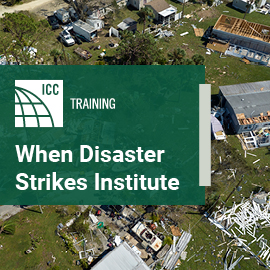
FEMA Highlights the Life and Property Savings of Building Codes
There is still work to be done in the effort to protect people and property from fire. But a pilot study from FEMA and the U.S. Fire Administration shows that one notable change has made a significant difference: the adoption and implementation of building codes.
According to Headwaters Economics, more than 100,000 structures have been destroyed by wildfires since 2005, resulting in an untold number of fatalities, evacuations and industries. While fire death rates have fluctuated in recent years, data from the National Center for Health Statistics show that more than 3,300 people died annually between 2013 and 2022. In 2022 (the last year on record), 4,446 deaths were reported.
In addition to the catastrophic loss of life, the National Institute of Standards and Technology (NIST) estimates that the annualized economic burden from wildfire is between $71.1 billion and $347.8 billion. This includes annualized losses between $63.5 billion and $285 billion.
Clearly there is still work to be done in the effort to protect people and property from fire. But a pilot study from the Federal Emergency Management Agency (FEMA) and the U.S. Fire Administration (USFA) shows that one notable change has made a significant difference: the adoption and implementation of building codes.
The Building Codes Save (BCS) – Fire Hazards Pilot Study used data from California (statewide) and Colorado (Boulder and El Paso counties) to evaluate the financial and life safety savings from modern building codes.
More Than $1 Billion Saved, 100+ Fatalities and 1,000+ Injuries Averted
In FEMA’s pilot study, three key building code provisions were evaluated:
- Advancements in fire-rated assemblies
- Introduction of early warning systems, like smoke alarms
- Introduction of fire sprinkler systems
Only single-family (SFR) residential structures were evaluated for the purpose of the study in order to narrow the types of codes that were considered. Non-building code measures, such as public education, were not included because they are not typically part of building codes adoptions.
The results are incredibly encouraging. For structure fires, the estimated lifetime economic savings reached nearly $1.8 billion for SFRs in California and more than $44.9 million in Boulder and El Paso counties.
These savings are spread over the 75-year useful life of residential structures. Even better, more than 100 fatalities and more than 1,000 injuries have been averted in California, as well as seven fatalities and 66 injuries averted in Boulder and El Paso counties.
The wildfire savings were even greater, reaching an estimated $24.4 billion in California and $457.7 million in Boulder and El Paso counties.
Evaluating the Effects of Building Codes
These results were based on a pre-modern and post-modern analysis of building codes, starting with the year 2000 as a baseline for how modern codes avoid losses caused by structure fires. That year is particularly important because it marks the debut of the International Code Council’s first International Residential Code® (IRC) in both California and Colorado.
For wildfire, 2008 was used as a baseline in California because it aligns with the statewide implementation of the California Building Code (CBC) Section 7A, Materials and Construction Methods for Exterior Wildfire Exposure. The CBC is based on the Code Council’s International Building Code® (IBC).
The baseline for modern codes relating to wildfire in Colorado was 2014 because it aligned with the adoption of the Code Council’s International Wildland Urban Interface Code® (IWUIC).
On an annual basis, the savings for structure fires are estimated to be $58.2 million in California and $4 million in Boulder and El Paso counties. Annual savings for wildfires amount to an estimated $325.1 million in California and $6.1 million in the aforementioned Colorado counties.
Long-term, the FEMA/USFA study estimates that the “adoption of post-2000 International Codes® and CBC Section 7A/IWUIC will save billions of dollars in avoided future losses throughout the nation.” In the future, both organizations plan to expand the study nationally to better identify best practices by region and to acquire comprehensive insights into the benefits of modern building codes.
To learn more about the wildland-urban interface, visit the Code Council’s dedicated webpage here.








